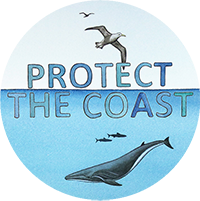Floating Offshore Wind Energy Infrastructure
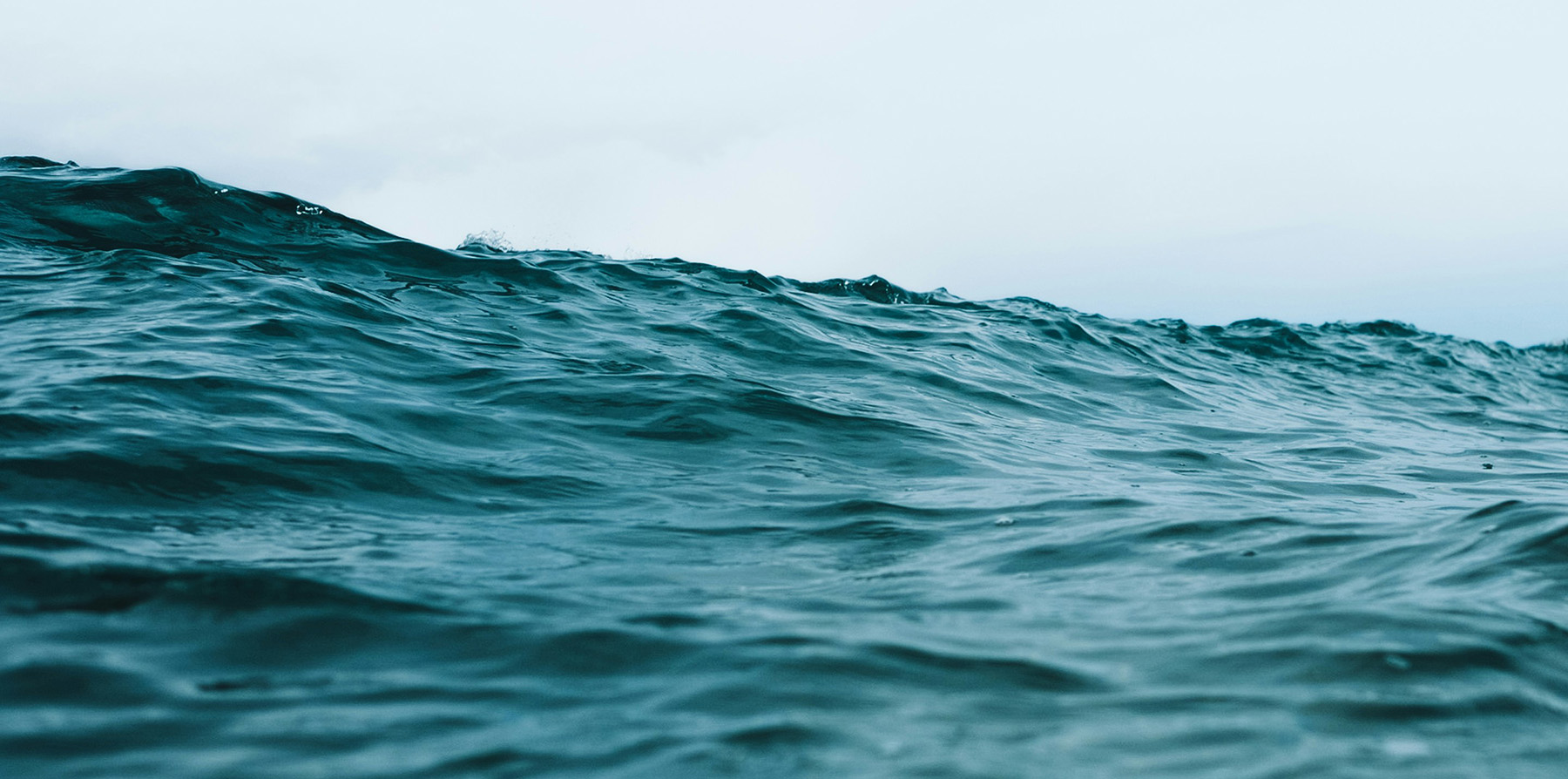
Wind energy areas, whether on land or offshore, are massive industrial projects that require a huge amount of infrastructure to build and support. Here we focus on describing floating offshore wind energy areas and the infrastructure required for these power plants.
Offshore infrastructure
Size
The current generation of 13MW wind turbines being built on the East coast (grounded, not floating turbines) have a height of 853 feet (compare to the Eiffel tower at 1,063 feet), with 351 foot long blades (about the length of a football field). Each blade weighs about 60 tons, and the swept area of the blades is about 500,000 square feet (about 5 city blocks in New York City). Blade tip speeds can exceed 150mph.
The lifespan of a wind turbine is supposed to be about 25 years, although we know the failure rate is fairly high.
Components
A wind turbine consists of a tower, a nacelle, and blades, typically 3.
Tower
The tower of a turbine is made out of steel. For a single 15MW turbine, about 3,250 tons of steel is required to make this tower, requiring about 1,300 tons of coal, 5,200 tons of iron ore, as well as nickel and other materials. Making this much steel emits approximately 5,000 to 10,000 tons of CO2 equivalent (CO2e). This does not include the energy and CO2e to shape steel into a turbine tower. Towers can be recycled, although recycling steel is an energy-intensive process.
Nacelle
A nacelle is a large structure that sits on top of the tower and contains bearings, a gearbox, a generator, control gear, 800 or more gallons of oil and lubricants, and more. A nacelle is typically over 50 feet long and can weigh as much as 300 tons. It is as big as a small house. The blades attach to the nacelle. The generator uses magnets designed to increase power generation. These magnets are made out of rare earths, most of which are mined and refined in China, where these industries have created massive toxic lakes and poisoned entire communities.
Blades
Turbine blades are made out of fiberglass, balsa wood and/or styrofoam to create the rigid structure, and resins, epoxies, and glue. Fiberglass is made out of plastic and glass composite materials. Balsa wood is light, strong wood from balsa wood trees, primarily from Ecuador where balsa wood extraction is devastating forests. Styrofoam is a fossil fuel product that is non-recyclable and toxic when it enters the environment.
Turbine blades experience leading edge erosion, where the edge of the blades erode over time, especially when exposed to salty marine air and high winds. This erosion spews contaminants–epoxy, resins, glue, paint, and fiberglass–into the environment. One estimate concluded that one turbine can erode 62 kg, or 136 pounds, of micro plastics into the environment per year. For a large wind energy area like those being proposed for the West coast and constructed on the East coast, this would result in thousands of pounds—many tons—of plastics and other contaminants entering the environment every year per wind energy area.
Turbine blades fail regularly. On July 13, 2024, one of the blades at Vineyard 1 near Rhode Island failed, breaking off into the ocean. Remember, these blades weigh 60 tons each and are 351 feet long. This is a huge amount of materials entering the ocean. Wind turbine blades are failing at the rate of about 3,800 blades per year. In an offshore wind energy area with a few hundred turbines, we can expect about 15 blade failures every year, about 1000 tons of epoxy, fiberglass, and styrofoam contaminating the ocean and shores. A 747 weighs 200 tons–do we want the debris equivalent of 5 jumbo jets polluting the ocean and shores every year?
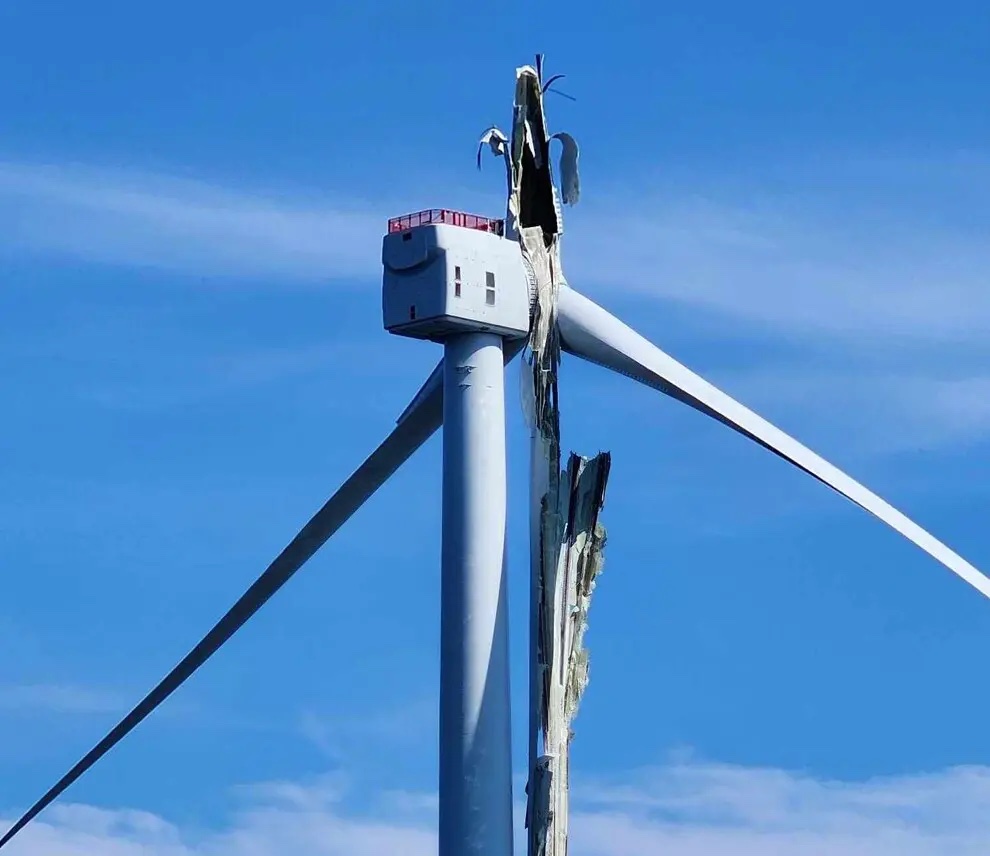
Blades are not recycled. They can be down-cycled, usually chopped up and used as aggregate filler for infrastructure like roads, or they are landfilled or burned, usually in concrete plants.
Bases
There are a variety of different bases used for grounded and floating offshore wind turbines. For grounded turbines, the monopile base is typically used: a 40-50 foot diameter steel post that is pounded 150-200 feet into the seabed. Floating turbines sit on floating bases, which are anchored to the seabed with chains, cables, and drag anchors. For the largest turbines, the bases can be as big as football stadiums.
Anchors and chains
To anchor a floating turbine base into position requires huge steel chains connected to massive drag anchors, along with polyester mooring rope holding clump weights and suction anchors. The turbines in the wind energy areas on the Pacific Coast would be positioned in water between approximately 600 meters (almost 2000 feet) to 1500 meters (almost 5000 feet, almost 1 mile) deep, so the amount of chain, cables, and anchors for a wind energy area is large.
Drag anchors hold a turbine in place by embedding into the seabed. These anchors are massive, weighing about 20 tons.
A report on the infrastructure required for floating offshore wind turbines estimates that for a 132 turbine floating offshore wind energy area with 15MW turbines, the mooring requirements would include:
- 528 mooring lines
- 238km of steel chain
- 30km of rope
- 1,059 clump weights
- 396 drag anchors
- 132 suction anchors
among other components.
The chains and cables in a FOWEA form a labyrinth of underwater infrastructure that must be navigated by marine life. The drag anchors and chains are likely to damage the seabed and kill marine life directly. A large concern is that the chains will drag along the seabed as the turbine base and turbine move with waves and especially in storms, and create huge sediment plumes that will also kill marine life. Whales, dolphins and other marine mammals may become entangled in the lines or become confused when attempting to navigate through the labyrinth.
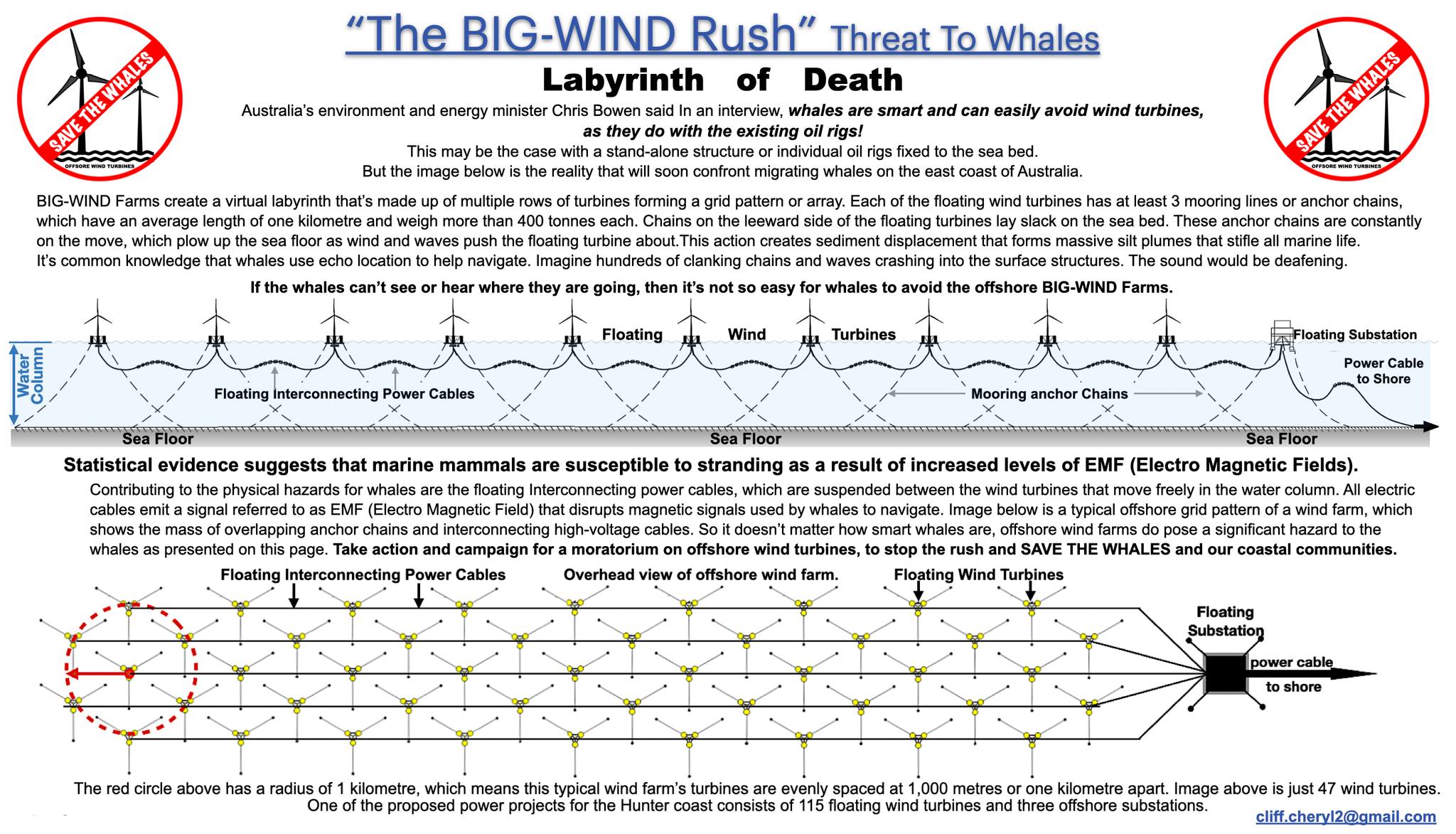
Electrical cables and substations
The turbines are connected to electrical array cables which transmit AC power from a turbine to a floating substation. One or more substations collect power from a group of turbines, convert the AC electricity to DC and then transmit the DC to an onshore substation via a high voltage direct current (HVDC) export cable.
Array cables may or may not be trenched; export cables usually are.
Substations are moored like the turbines and bases are, with chains, cables, and anchors. They are large structures, multiple stories high. Along with impacts from infrastructure to hold them in place, substations can impact the immediate environment in others ways. Most substations use sulfur hexafluoride gas to insulate electrical equipment. SF6 is a powerful greenhouse gas with 23,500 times the warming potential as CO2, so even small leaks of this gas are devastating for the climate. Substations need to cool electrical equipment and often use “open loop systems” that pump cold ocean water into pipes that cool the equipment, and then pump the heated water back into the ocean, along with the biocides used to keep the pipes free of algae and other living marine organisms. The water that is pumped back into the ocean is as hot as 90F, and so will impact marine organisms in the direct vicinity of the substation.
Service vessels
There are a number of specialized vessels required to install and maintain an offshore wind energy area. These include:
- Vessels to tow a wind turbine and base into place
- Vessels to transport and install wind turbine components
- Survey vessels
- Crew transfer vessels
- Heavy lift vessels
- Cable installation vessels (to trench electrical cables)
- Rock installation vessels (to place sediment and rocks over trenched cables)
- Service operation vessels (floating hotels for construction and service workers, and storage for spare parts, etc.)
These specialized vessels are large and require ports and marine terminals capable of supporting them.
Onshore infrastructure
Floating offshore wind energy areas require extensive onshore infrastructure to support them for surveys, installation, operation, maintenance, and decommissioning.
Onshore substations receive electricity from the FOWEA via the HVDC export cable. The substation then transmits the power onto the grid.
Grid expansions are often necessary to connect new onshore stations to the existing grid infrastructure and to expand that existing infrastructure to handle the additional load. New grid lines create swathes of destruction across mountains and through forests, fragmenting habitat, and heavily impacting wildlife along the route.
Because wind energy is intermittent, battery energy storage sites (BESS) or gas power plants must be used to supply power when the wind is not blowing. Battery storage is expensive, and controversial because of the high risk of fire, especially if the batteries are located in an area that can experience flooding (Li-ion batteries can easily catch fire and explode if soaked in water). Communities around the country are pushing back hard on BESS in their communites. Gas power plants that run as backup to wind energy tend to run at much lower efficiency, thus creating far more CO2 emissions than a gas power plant running at full capacity.
Marine terminals must be built to receive large turbine components and transfer them to vessels, and ports might need to be expanded with bigger docks, dredgeing, power, and more to support the industry.
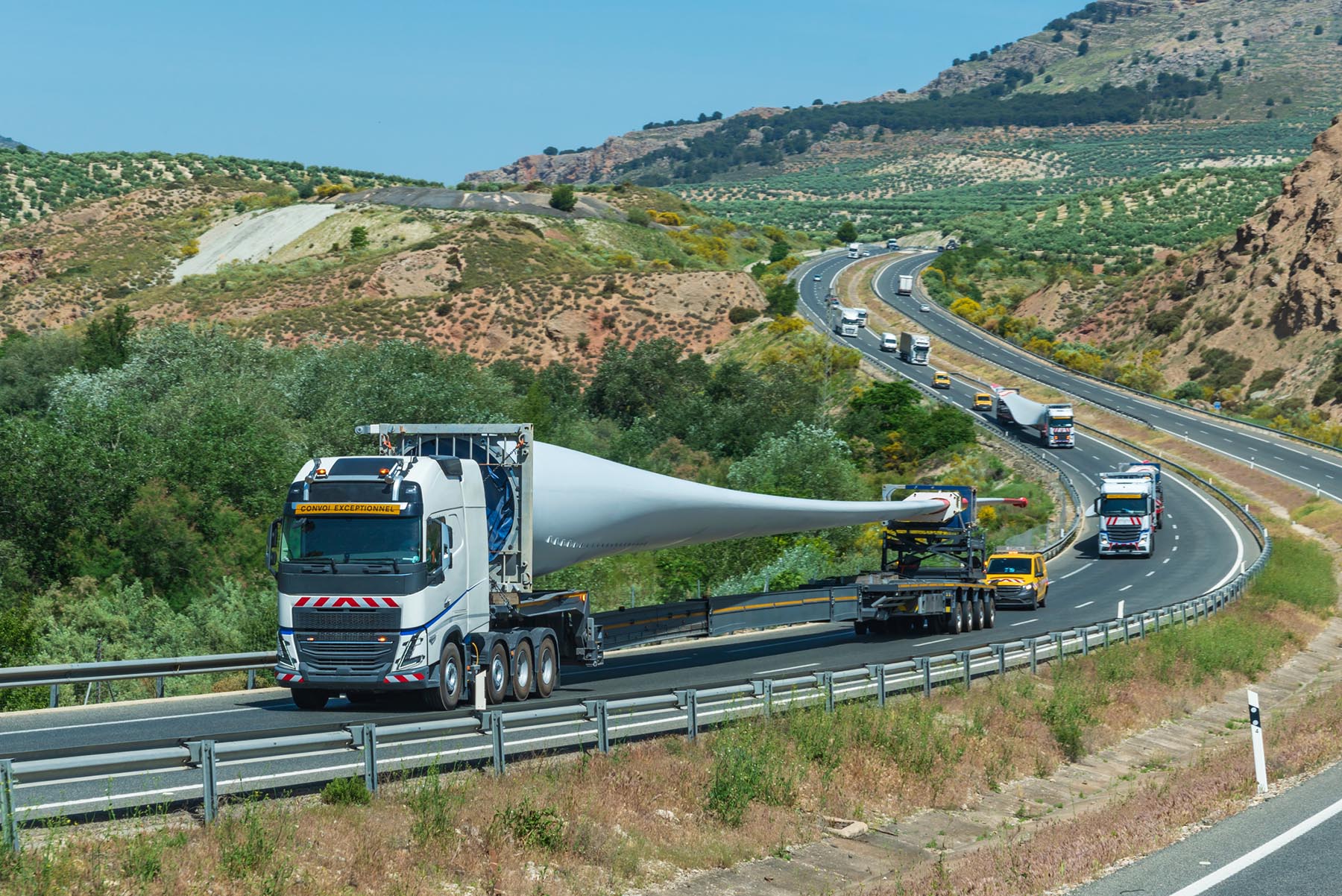
Roads might need to be expanded to handle the massive components that must be trucked to the marine terminals.
Worker housing must be built for construction and service crew and marine terminal crew.
Related onshore infrastructure
Along with the offshore and onshore infrastructure directly related to any given FOWEA, there is substantial infrastructure required to supply the materials for wind turbine components, refine those materials, and build the components.
Materials required to build wind turbines and related infrastructure run the gamut, and include (for the turbines alone):
- Concrete
- Steel (Coal, Iron, and Nickel)
- Fibreglass
- Polymers
- Aluminium
- Copper
- Zinc
- Manganese
- Chromium
- Nickel
- Molybdenum
- Neodymium
- Praseodymium
- Dysprosium
- Terbium
- Balsam wood
- Styrofoam
- Epoxies, resins, glues, and paint
Mining, refining, and manufacturing the materials for wind turbines and all of the offshore and onshore components and infrastructure we’ve destribed here is incredibly destructive, damaging or destroying ecosystems whereever it occurs.
Videos explaining Floating Offshore Wind Energy Areas
Protect the Coast PNW has created presentations describing floating offshore wind energy technology and their impacts, along with the various groups resisting this industrial technology. The material in this page is included in the presentations below.
You can share these videos from our YouTube channel here: https://www.youtube.com/@ProtectTheCoastPNW
